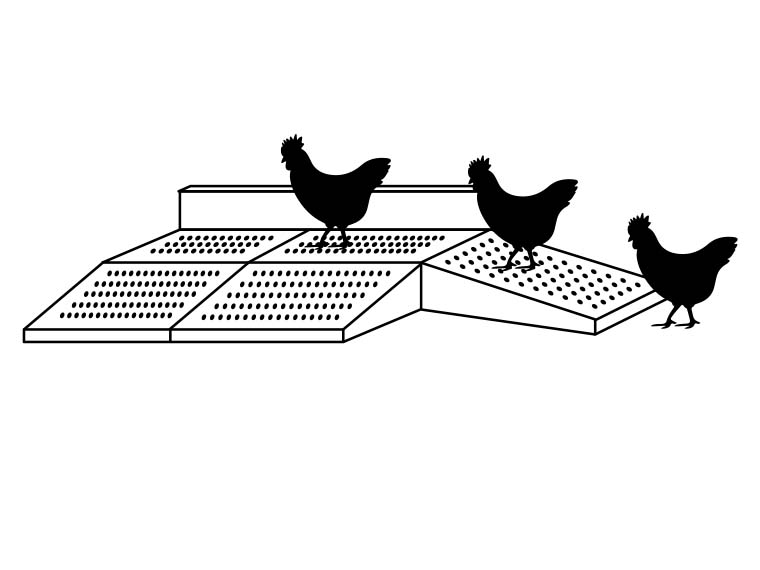The information presented on this page may be dated. It may refer to situations which have changed or people who are no longer affiliated with the university. It is archived as part of Mississippi State University's history.
Broiler chickens are Mississippi's largest agricultural commodity, with 746 million produced in 2017. They are grown in large, open houses with ample food and water. However, the current system has limitations, given all birds are at ground level.
A new study in the Mississippi Agricultural and Forestry Experiment Station is exploring the use of elevated perching platforms to improve bird mobility, health, airflow, and the condition of litter in broiler houses.
"When broilers are first moved into a house, they have plenty of room. However, the bigger they grow, the less room there is to move around," said Dr. Tom Tabler, extension professor in poultry science. "The use of elevated perching platforms in a broiler house is a novel idea to increase the amount of floor area inside the house."
In a laboratory test, a small-scale platform is designed to measure 48 inches wide by 24 inches deep. It includes ramps for easy accessibility. Each platform is grated so that manure can drop below the platform for easy disposal.
The platform improves mobility as it gives the birds the opportunity to move around and get off the litter. Ramp access increases bone health and strength due to the added physical exercise and by providing the opportunity to move up and down on an incline.
To determine the effect of the platform on broiler activity, scientists have equipped birds with an accelerometer. Accelerometers record the directional acceleration of the animal: forward and backward, left to right, and up and down. They are also analyzing real-time video to determine platform usage and to correlate accelerometer data.
"The accelerometer gives us a quantitative metric of how active the broiler has become with the addition of the elevated perching platforms," said Dr. Garrett Street, assistant professor in wildlife, fisheries and aquaculture and an expert in space use. "This measurement will help us determine how much energy they expend and if the platform has improved their energy expenditures."
Scientists have incorporated the use of a robot to encourage birds to use the platform. To ensure that the robot does not stress the birds more than a caretaker, they measured the use of the autonomous vehicle through a non-invasive method called avoidance distance tests.
"Avoidance distance is the distance between an animal and an approaching object at the moment of animal withdrawal," said Dr. Yang Zhao, principal investigator and assistant professor in agricultural and biological engineering. "Overall, broiler avoidance distance to the robot is similar to avoidance distance of a human, which suggests the broilers become accustomed to the autonomous vehicle."
In addition to increasing mobility, the elevated perching platforms potentially will improve the paw quality of broilers.
As the broilers reach harvest age, litter often becomes wet, which causes issues with paw quality. While chicken paws are not consumed in large volume in the U.S., numerous countries throughout Central America and Asia enjoy the delicacy, often referred to as ‘phoenix claws.'
"Wet litter is the biggest issue with paw quality," Tabler said. "Using elevated perches could create space for air to move and dry out the litter, plus the elevated perches give the birds an opportunity to move off the wet litter."
The litter becomes wet because of the cooling cells in the broiler house that create high levels of moisture. The air circulating through the house does not dry the litter because the chickens are all on the floor.
The litter becomes wet because of the cooling cells in the broiler house that create high levels of moisture. The air circulating through the house does not dry the litter because the chickens are all on the floor.
Preliminary research has been conducted with more research planned for the coming year. Ultimately, it is expected that the research will improve broiler welfare and health, increase ventilation efficiency, and enhance air quality.
This research was funded by the Mississippi Agricultural and Forestry Experiment Station.

